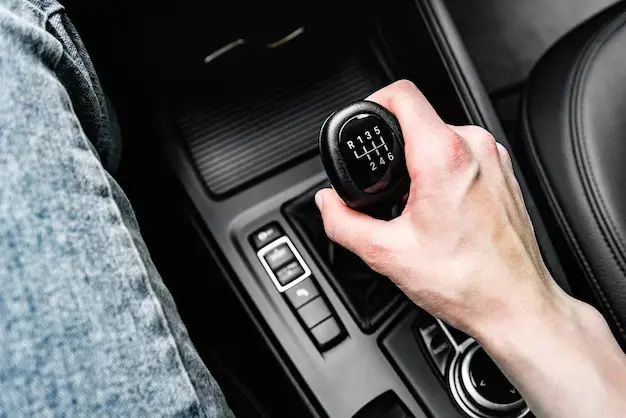Manual Transmission: Advantages, Pros and Cons
When it comes to choosing a vehicle, one of the most significant decisions a driver faces is the type of transmission. Among the options, manual transmission remains a popular choice for many automotive enthusiasts and everyday drivers alike. In this article, we will explore the advantages and disadvantages of manual transmission in detail, shedding light on its mechanics, driving experience, maintenance, and more.

Index
Understanding Manual Transmission
Manual transmission, often referred to as a “stick shift,” is a type of transmission where the driver manually selects gears using a clutch pedal and gear lever. This system allows for more control over the vehicle’s power and speed, as drivers must actively engage with the gear selection process. Manual transmissions are found in various types of vehicles, from compact cars to high-performance sports cars, and they come with unique benefits that appeal to many drivers.
Advantages of Manual
- Better Fuel Efficiency
One of the primary reasons many drivers opt for manual is its potential for better fuel efficiency. Manual transmissions can provide better fuel economy compared to their automatic counterparts. This is primarily because they tend to have a simpler design, which reduces the weight of the vehicle. Additionally, manual allows drivers to shift gears at optimal RPMs, which can lead to improved fuel efficiency. A study by the U.S. Department of Energy indicates that driving a manual vehicle can enhance gas mileage, especially in highway conditions. Drivers who are skilled in using manual can often maximize their fuel efficiency by managing their gear shifts effectively. - Lower Purchase Price
Vehicles equipped with manual are often less expensive than those with automatic transmissions. This price difference can be attributed to the simpler construction and fewer components involved in manual systems. For budget-conscious buyers, this makes manual vehicles an attractive option. Furthermore, because of the cost savings in manufacturing, some entry-level models are exclusively offered with manual options, allowing new drivers to purchase a reliable vehicle at a lower price point. - Enhanced Driver Engagement
Many driving enthusiasts prefer manual because it provides a more engaging driving experience. Shifting gears manually allows for a greater connection to the vehicle, making the driving experience feel more dynamic. This engagement is particularly pronounced in performance-oriented vehicles, where precise gear shifts can enhance acceleration and overall performance. For those who appreciate the art of driving, mastering a manual can add a layer of satisfaction and enjoyment to the experience. - Improved Control in Various Conditions
Manual offer drivers enhanced control, particularly in challenging driving conditions such as snow, mud, or off-road scenarios. With the ability to select gears manually, drivers can adjust their vehicle’s power output to better navigate difficult terrain or slippery surfaces. This control can lead to safer driving experiences in adverse weather conditions, as it allows drivers to maintain traction and avoid getting stuck. For example, in snowy conditions, a driver can choose to start in a higher gear to reduce wheel spin and maintain better control of the vehicle. - Fewer Repairs and Maintenance
Manual transmissions typically have fewer components that can fail compared to automatic transmissions. This simplicity often translates to lower maintenance costs over the vehicle’s lifespan. While clutch replacements are necessary, they are generally less frequent than repairs needed for automatic transmission systems, which can be complex and costly. Additionally, because manual do not rely on hydraulic systems, they are less prone to the kinds of failures that can plague automatic systems. - Longer Lifespan
Manual transmissions often exhibit a longer lifespan when maintained properly. The absence of complex electronics and hydraulic systems means fewer things can go wrong. As a result, many manual transmission vehicles can last significantly longer than their automatic counterparts, provided that the driver practices good shifting habits and regular maintenance. Some enthusiasts have reported driving manual vehicles well over 200,000 miles with minimal issues, highlighting the durability of manual transmissions.
Disadvantages of Manual Transmission
While manual transmission has numerous advantages, it is not without its drawbacks. Understanding these cons is essential for making an informed decision.
- Steeper Learning Curve
For new drivers, learning to operate a manual transmission can be challenging. The coordination of the clutch and gear shifter requires practice and can lead to a steep learning curve. Many driving schools focus on automatic transmissions, making it more difficult to find instruction for manual vehicles. This learning process can be intimidating for some, particularly if they have only ever driven automatic cars. - Driver Fatigue in Heavy Traffic
Driving a manual transmission vehicle in heavy traffic can be exhausting. Constantly engaging the clutch and shifting gears can lead to fatigue, making the driving experience less enjoyable. This is particularly true in urban environments where stop-and-go traffic is common. For drivers who frequently commute in heavy traffic, the convenience of automatic transmission may outweigh the benefits of a manual. - Decreased Resale Value
As the popularity of automatic transmission vehicles continues to rise, the resale value of manual transmission vehicles may decrease. Many consumers prefer the convenience of automatic transmissions, leading to reduced demand for manual models. Consequently, manual transmission vehicles may not hold their value as well as automatics. For those who plan to sell or trade in their vehicle in the future, this is an important consideration. - Limited Availability
As more manufacturers shift their focus to automatic transmissions, the availability of new manual transmission vehicles has decreased. This limited selection can make it challenging for buyers to find the model they want with a manual option. Additionally, many modern vehicles, especially luxury models, are no longer offered with manual transmission, limiting choices for enthusiasts. This trend has led to a perception that manual transmission vehicles are becoming a niche market. - Incompatibility with Advanced Driver-Assistance Systems (ADAS)
Many of today’s advanced safety and driver-assistance technologies are designed primarily for automatic transmission vehicles. Features such as adaptive cruise control and lane-keeping assist may not be compatible with manual transmission systems, limiting the availability of these technologies for manual drivers. As technology continues to evolve, the gap between manual and automatic options may widen, making manual transmissions feel increasingly outdated. - Potential for Stalling
New drivers may struggle with stalling a manual transmission vehicle, especially on inclines or during quick stops. This can lead to frustrating experiences and even hazardous situations if a driver is unable to restart the vehicle quickly in traffic. Stalling can also cause unnecessary wear on the vehicle’s clutch system, leading to more frequent repairs and maintenance. Additionally, the fear of stalling can create anxiety for new drivers, making the learning process even more challenging.
Conclusion
Choosing between manual transmission and automatic transmission ultimately comes down to personal preference and driving style. Manual transmission offers several compelling advantages, such as better fuel efficiency, lower purchase prices, and enhanced driver engagement. However, it also presents challenges, including a steeper learning curve and potential driver fatigue in heavy traffic.
Ultimately, understanding the pros and cons of manual transmission can help drivers make informed decisions about their vehicle choice. For those who value control, performance, and a more hands-on driving experience, manual transmission may be the ideal option. Conversely, those who prefer convenience and ease of use might find automatic transmission more appealing.
If you’re in the market for a new vehicle, it’s essential to weigh these factors carefully. Test driving both manual and automatic models can give you a better feel for which transmission suits your driving style best. Remember that each option has its unique set of advantages and disadvantages, so consider your needs and preferences before making a decision.
